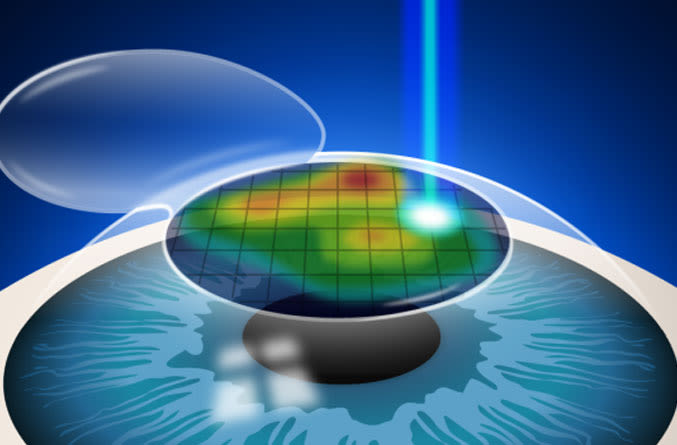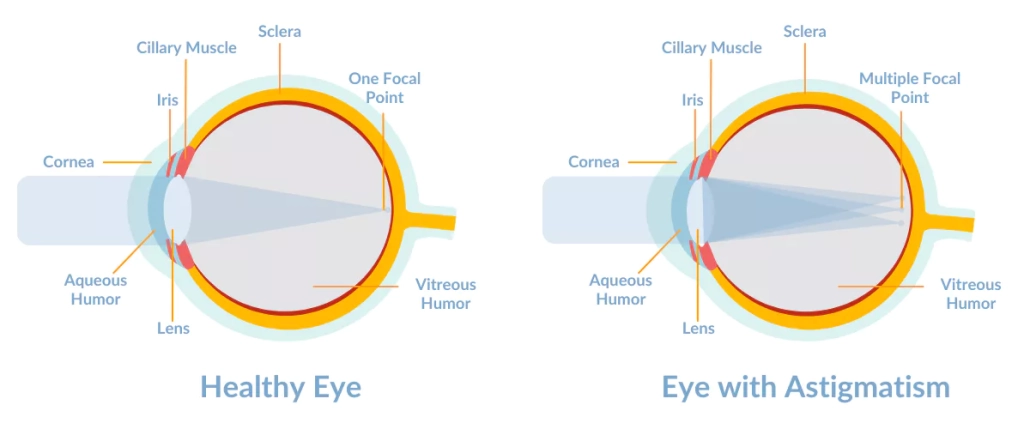LASIK (Laser-Assisted In Situ Keratomileusis) has transformed vision correction, providing millions of people with improved eyesight and reducing their dependence on glasses or contact lenses. As technology continues to advance, the future of LASIK looks promising, with exciting developments on the horizon. In this article, we will delve into the advancements and emerging trends that are shaping the future of LASIK, revolutionizing the procedure, and opening new possibilities for patients.
1. Customized Wavefront Technology
Wavefront technology has been a game-changer in LASIK, enabling precise measurements of the eye’s unique imperfections. However, the future holds even greater advancements in customized treatments. By utilizing artificial intelligence (AI) and machine learning algorithms, LASIK procedures will become even more tailored to each individual’s specific needs, resulting in superior visual outcomes and patient satisfaction.

Image Source: www.allaboutvision.com/visionsurgery/custom_lasik.htm
2. Femtosecond Lasers
Femtosecond lasers have already revolutionized LASIK by replacing the traditional microkeratome blade with a precise laser for creating the corneal flap. Looking ahead, the use of femtosecond lasers will continue to evolve. With increased automation and refinement, these lasers will enhance the safety, accuracy, and predictability of LASIK procedures, reducing the risk of complications and improving post-operative recovery.

Image Source: www.areaoftalmologica.com/en/refractive-surgery/femtolasik/
3. Topography-Guided LASIK
Topography-guided LASIK utilizes corneal mapping technology to create a highly detailed and personalized treatment plan. This advanced technique corrects irregularities in the cornea, addressing conditions like astigmatism, higher-order aberrations, and irregular astigmatism. The future of LASIK will witness further advancements in topography-guided treatments, optimizing visual outcomes and expanding the range of treatable refractive errors.
4. PresbyLASIK and Beyond
PresbyLASIK aims to address age-related vision changes, such as presbyopia, which affects the ability to focus on close objects. In the future, refinements in presbyLASIK techniques will offer enhanced solutions for patients seeking both near and distance vision correction. Multifocal and extended depth of focus (EDOF) LASIK options will become more sophisticated, providing improved visual acuity at various distances, reducing the need for reading glasses or bifocals.
5. Smart Contact Lenses and Intraocular Lenses
While LASIK has been successful in correcting refractive errors, future innovations may extend beyond the traditional laser procedure. Smart contact lenses and intraocular lenses (IOLs) embedded with technology could potentially offer dynamic vision correction, adjusting focus based on the eye’s needs. These advancements hold promise for individuals with higher refractive errors or those seeking vision correction alternatives to LASIK.
6. Non-invasive Refractive Procedures
Advancements in non-invasive refractive procedures are being explored to provide alternatives to traditional LASIK. Techniques like corneal collagen cross-linking (CXL) and corneal inlays are emerging as potential options for patients with thinner corneas or those looking for reversible refractive procedures. As these techniques continue to be refined, they may present viable alternatives or adjuncts to LASIK in the future.
7. Conclusion
The future of LASIK is filled with exciting advancements and emerging trends that will reshape the landscape of vision correction. Customized wavefront technology, femtosecond lasers, topography-guided treatments, and presbyLASIK are just a few examples of the innovations transforming LASIK. Additionally, smart contact lenses, intraocular lenses, and non-invasive refractive procedures are expanding the possibilities for vision correction beyond traditional LASIK. By staying informed and embracing these advancements, patients and eye care professionals can look forward to a future where LASIK continues to deliver exceptional outcomes and improved quality of life.
Remember, as technology continues to progress, it is essential to consult with a qualified ophthalmologist or eye care professional to understand the latest advancements and determine the most suitable treatment options for your individual needs.

